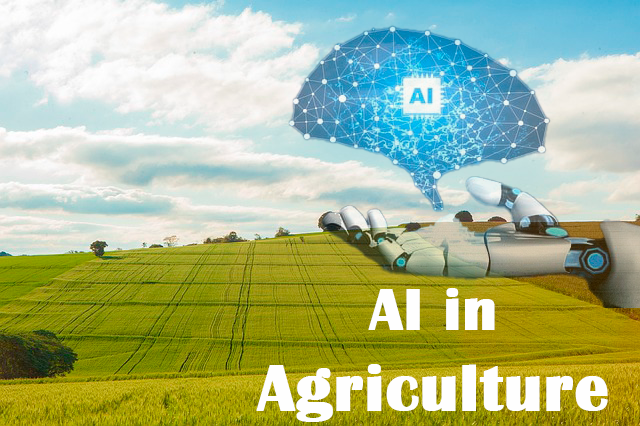AI in Agriculture: Feeding the Future with Precision Farming

As the global population continues to rise, the agricultural industry faces unprecedented challenges in ensuring food security while minimizing environmental impact. Artificial intelligence (AI) has emerged as a transformative force in agriculture, introducing precision farming techniques that revolutionize how we grow, harvest, and distribute food. From predictive analytics to robotics, AI-powered solutions are helping farmers optimize yields, reduce waste, and address climate change challenges.
Table of Contents
In this comprehensive article, we explore the role of AI in agriculture, its applications, benefits, and the future of precision farming.
What Is Precision Farming?
Precision farming, or precision agriculture, refers to the use of technology to monitor, manage, and optimize agricultural practices. It involves collecting and analyzing data to make informed decisions about planting, irrigation, fertilization, and pest control.
Key Components of Precision Farming:
- Sensors and IoT Devices: Collect real-time data on soil conditions, weather, and crop health.
- Geospatial Technologies: Use GPS and satellite imagery for field mapping.
- AI Algorithms: Analyze data to provide actionable insights and automate farming tasks.
By integrating these technologies, precision farming enables sustainable practices while boosting productivity.
How AI Is Revolutionizing Agriculture
AI plays a central role in advancing precision farming by processing vast amounts of agricultural data and generating actionable insights. Here’s how AI is making a difference:
1. Crop Monitoring and Management
AI-powered drones and satellites capture high-resolution images of fields, enabling farmers to identify issues such as nutrient deficiencies, pest infestations, and diseases early.
- Example: Platforms like Plantix use AI to diagnose plant diseases from photos uploaded by farmers.
2. Predictive Analytics for Yield Optimization
Machine learning models analyze historical and real-time data to predict crop yields and recommend optimal planting schedules.
- Example: Climate FieldView uses AI to provide insights into soil conditions and forecast yields.
3. Robotics and Automation
AI-driven robots perform tasks like planting, weeding, and harvesting with precision, reducing labor costs and time.
- Example: The Blue River Technology’s “See & Spray” robot uses AI to identify and target weeds, minimizing herbicide usage.
Applications of AI in Agriculture
1. Soil Health Monitoring
AI analyzes soil data to determine its nutrient composition, moisture levels, and pH. This helps farmers decide when and where to plant crops for optimal growth.
- Tools Used: Soil sensors, IoT devices, and AI platforms like Taranis.
2. Irrigation Management
AI-powered systems use weather forecasts, soil data, and crop requirements to optimize irrigation schedules, conserving water.
- Example: Netafim’s AI-driven irrigation solutions reduce water usage by up to 30%.
3. Pest and Disease Control
AI detects early signs of pest infestations or plant diseases, allowing farmers to take preventive measures.
- Example: FAO’s “FAMEWS” app uses AI to monitor fall armyworm infestations.
4. Market Forecasting
AI models predict market demand, helping farmers plan production and pricing strategies.
- Example: Farmers Business Network uses AI to provide market insights and price benchmarks.
5. Supply Chain Optimization
AI streamlines the supply chain by predicting demand, reducing food waste, and ensuring timely delivery of produce.
- Example: Agribusinesses like Cargill leverage AI to manage logistics and inventory.
Benefits of AI in Agriculture
1. Increased Productivity
AI enables farmers to maximize yields by providing data-driven recommendations for planting, fertilization, and harvesting.
2. Cost Efficiency
Automation reduces reliance on manual labor, lowering operational costs.
3. Sustainability
AI promotes eco-friendly practices such as precision irrigation, reduced chemical usage, and soil health preservation.
4. Risk Mitigation
By predicting weather patterns and market trends, AI helps farmers minimize risks associated with unpredictable events.
5. Improved Food Security
AI ensures consistent and reliable food production to meet global demand.
Challenges of AI Adoption in Agriculture
While AI offers immense potential, its adoption in agriculture is not without challenges:
1. High Costs
The initial investment in AI technologies and infrastructure can be prohibitive for small-scale farmers.
2. Data Accessibility
AI relies on large datasets, which may not be readily available in rural areas.
3. Technical Expertise
Farmers need training to understand and effectively use AI tools.
4. Connectivity Issues
Limited internet access in remote areas hinders the deployment of IoT devices and cloud-based AI solutions.
Addressing these challenges requires collaboration between governments, tech companies, and agricultural organizations.
Case Studies: AI in Action
1. John Deere
The agricultural equipment manufacturer uses AI to develop smart tractors equipped with sensors and machine learning algorithms. These tractors analyze soil data and plant seeds with pinpoint accuracy.
2. Microsoft AI for Earth
Microsoft’s AI initiatives support farmers with tools for analyzing environmental conditions and optimizing agricultural practices.
3. IBM Watson Decision Platform
This platform uses AI to provide insights into weather patterns, crop diseases, and market trends, helping farmers make data-driven decisions.
Future of AI in Agriculture
The future of AI in agriculture is promising, with ongoing advancements in technology and innovation. Emerging trends include:
1. Blockchain Integration
Combining AI with blockchain ensures transparency and traceability in the supply chain.
2. Vertical Farming
AI optimizes indoor farming systems, maximizing yield while minimizing resource usage.
3. AI-Powered Biotech
AI accelerates genetic research, enabling the development of resilient crop varieties.
4. Autonomous Farming
Self-driving tractors and drones powered by AI will become standard, revolutionizing large-scale farming operations.
Conclusion
AI is redefining agriculture by introducing precision farming techniques that boost efficiency, sustainability, and profitability. From crop monitoring to supply chain optimization, AI’s applications are vast and transformative. While challenges remain, the potential of AI to feed a growing global population and mitigate climate change is undeniable. As technology continues to evolve, AI will undoubtedly play a pivotal role in shaping the future of agriculture.
By embracing AI, farmers can cultivate a more sustainable and prosperous future, ensuring food security for generations to come.
